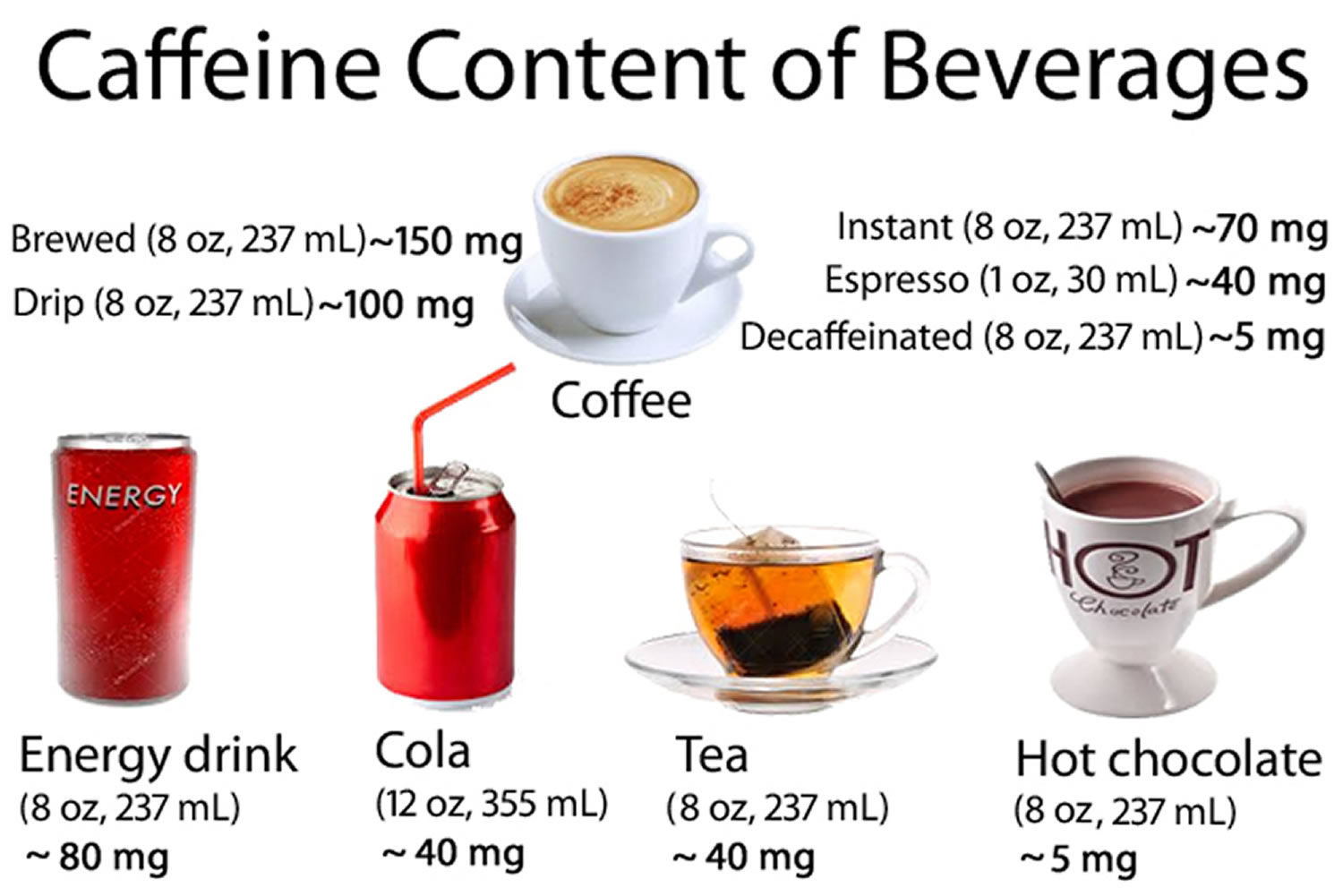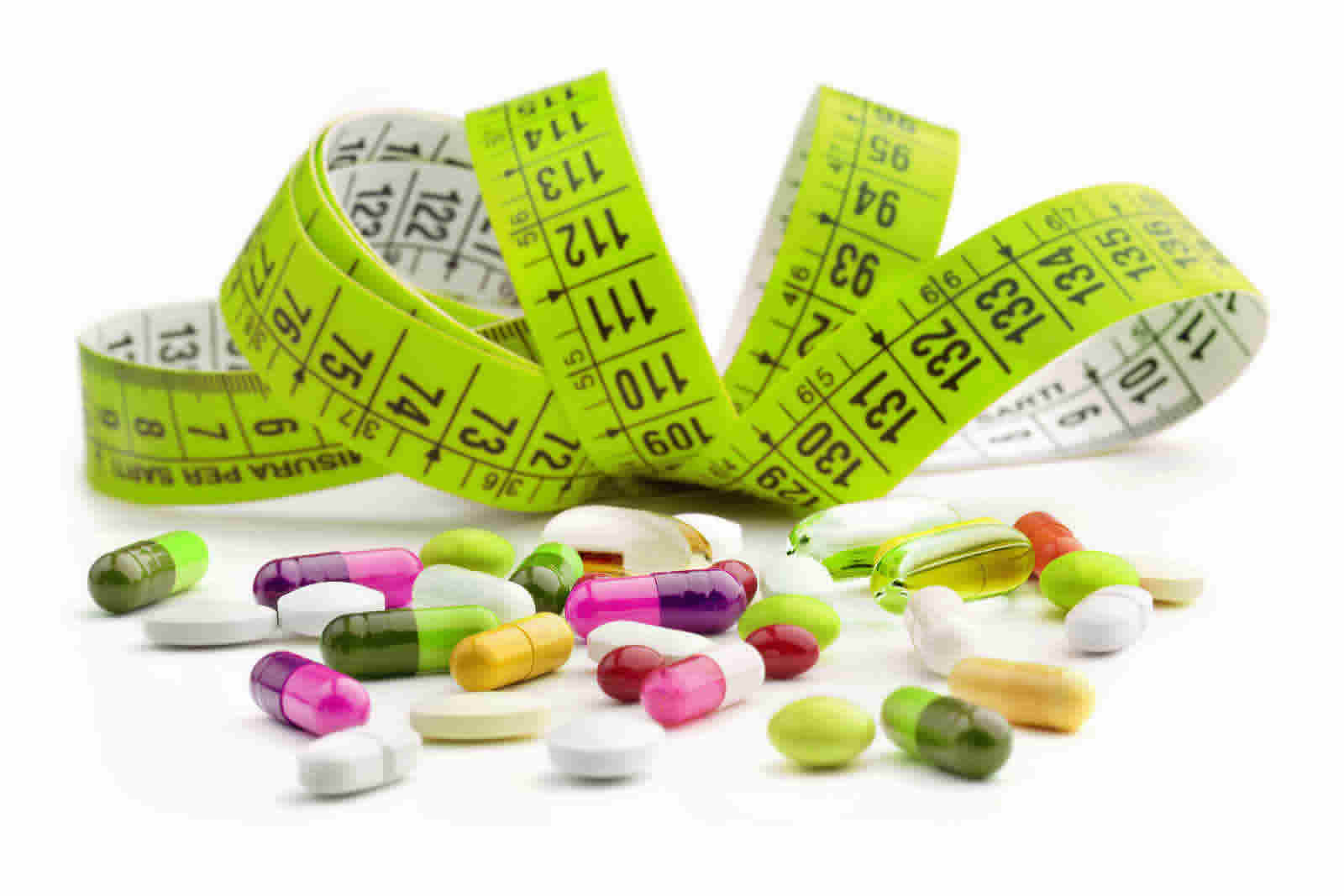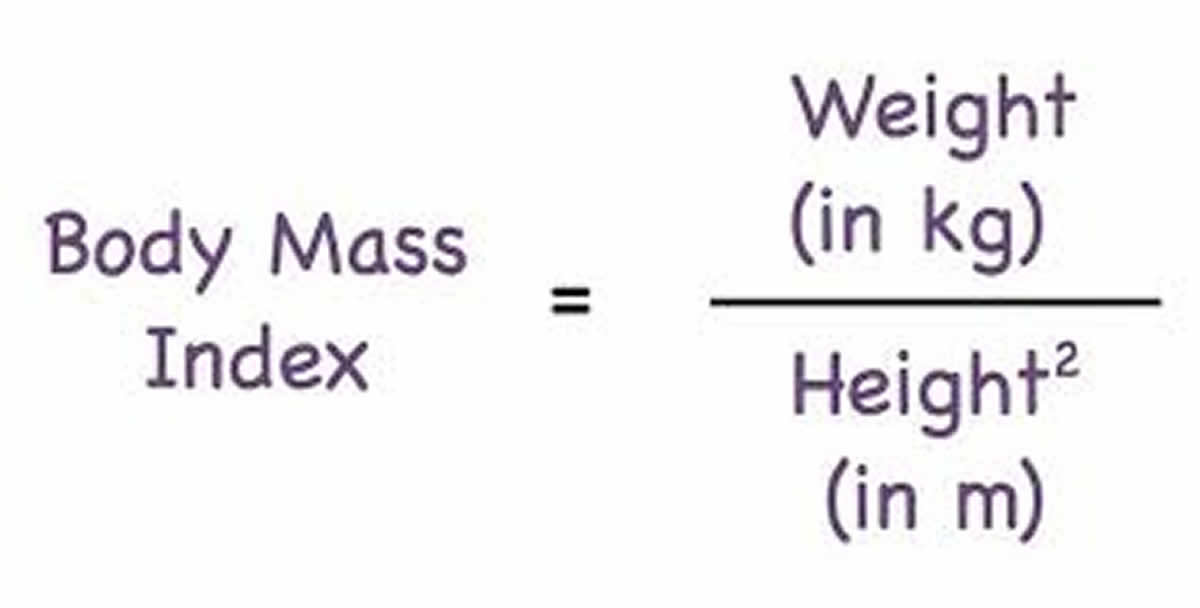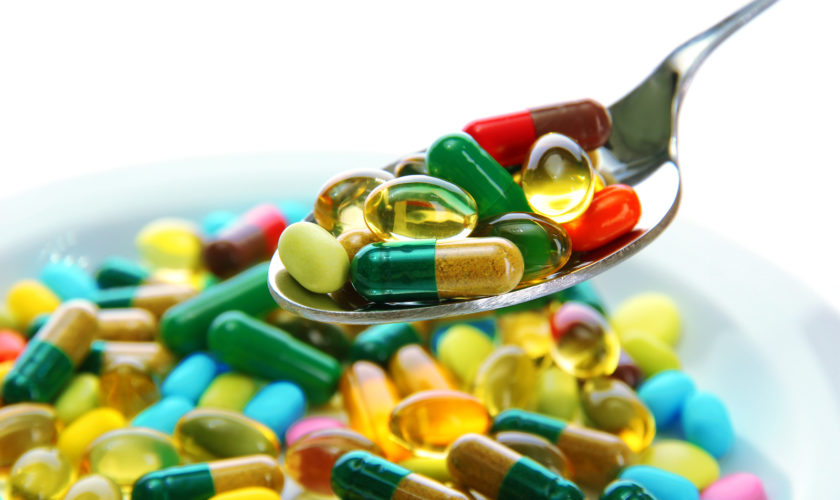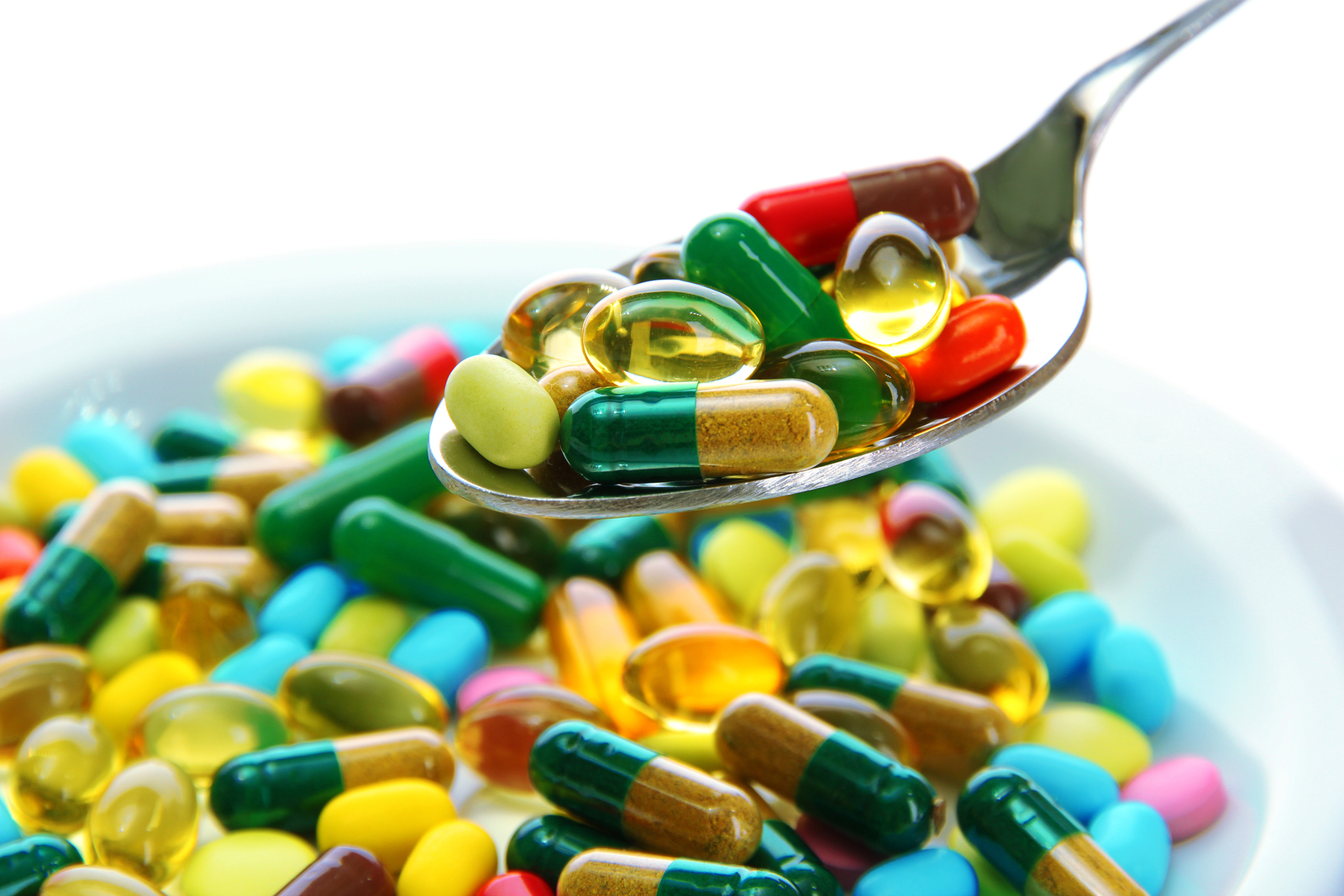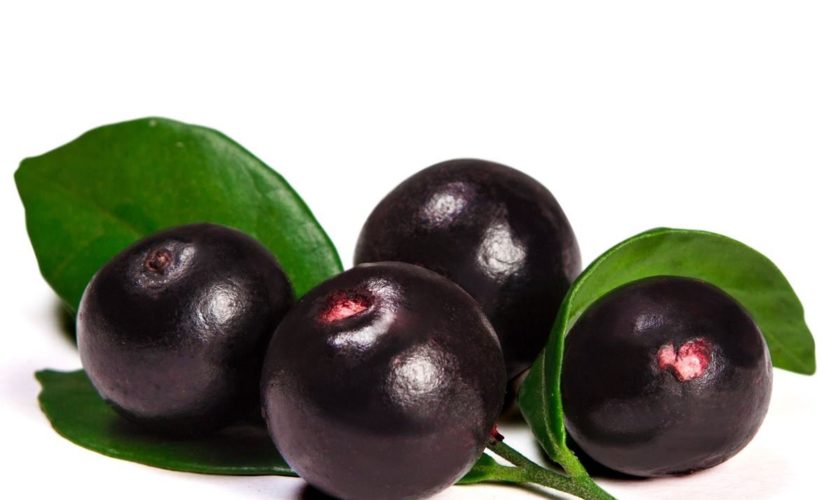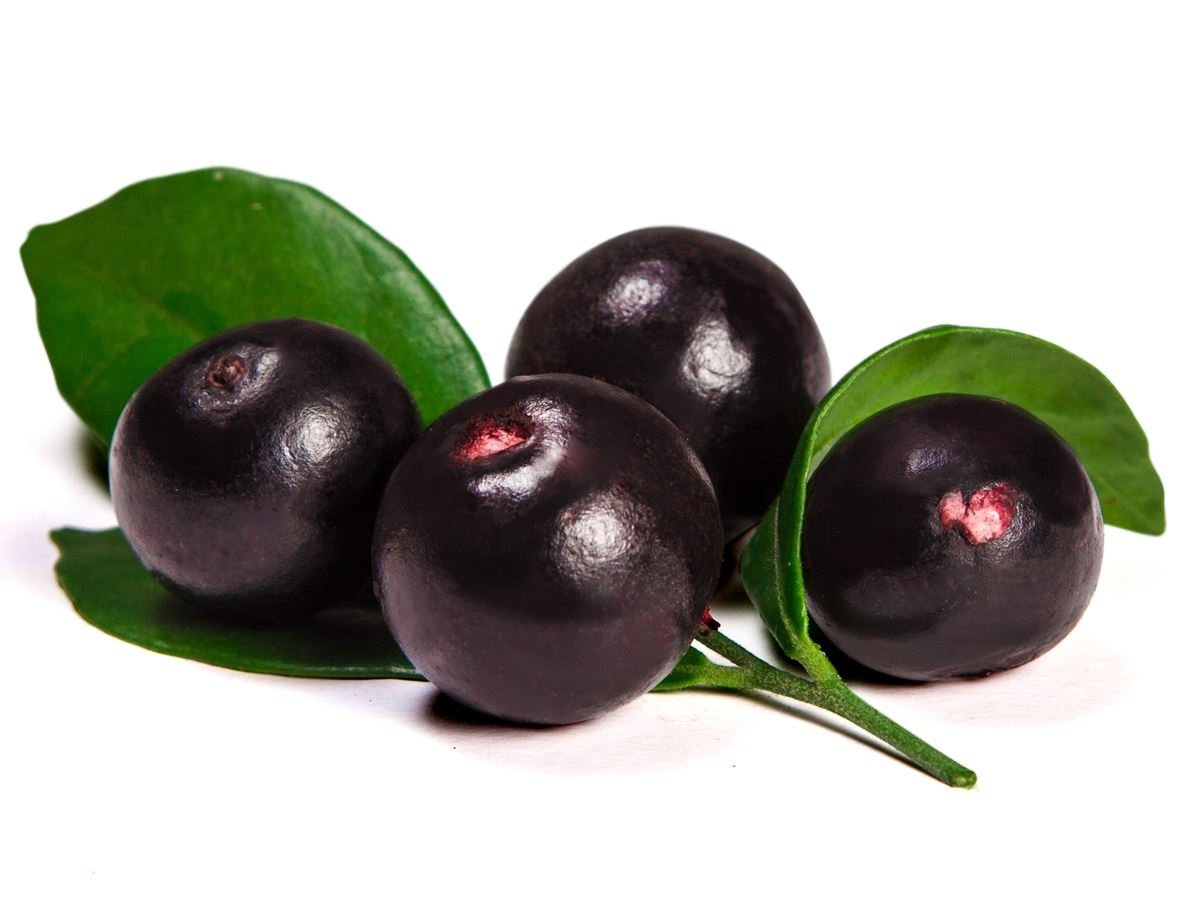What is Human Chorionic Gonadotropin (hCG) Diet
Human Chorionic Gonadotropin (hCG) is a natural hormone the body makes during pregnancy. Decades of scientific research have shown that Human Chorionic Gonadotropin (hCG) does not help people who are overweight or obese to lose extra pounds 1.
hCG diet supplement which stands for human chorionic gonadotropin diet supplement craze was first promoted for weight loss in the 1950s. It faded in the 1970s, especially when it became apparent that there was a lack of evidence to support the use of hCG for weight loss. Most studies have found that hCG has nothing to do with weight loss. It is the super-low-cal diet that is associated with the hCG diet supplement that will result in weight loss.
The hCG diet limits you to 500 calories a day for 8 weeks while taking hCG, either by getting an injection or by taking a “homeopathic” product, such as oral drops, pellets, pills or sprays, which you can buy at the store 1.
- FDA advises consumers who have purchased homeopathic HCG for weight loss to stop using it, throw it out, and stop following the dieting instructions. Harmful effects should be reported online to FDA’s MedWatch program 2 or by phone at 800-FDA-1088 (800-332-1088) and to the consumer’s health care professional.
Products that claim to contain hCG are typically marketed in connection with a very low calorie diet, usually one that limits calories to 500 per day. Many of these popular hCG products claim to “reset your metabolism,” change “abnormal eating patterns,” and shave 20-30 pounds in 30-40 days.
“These products are marketed with incredible claims and people think that if they’re losing weight, hCG must be working,” says the acting director of FDA’s Division of Non-Prescription Drugs and Health Fraud. “But the data simply does not support this; any loss is from severe calorie restriction. Not from the hCG.”
(Source 3).
People lose weight on the hCG diet not because of the Human Chorionic Gonadotropin hormone, but from the very low calorie they’re only eating, about 500 calories per day on the diet.
- In general, women need 1,600 to 2,400 calories per day and men need 2,000 to 3,000 calories per day to maintain a healthy weight.
Many research studies have shown that hCG does not move fat away from problem areas in the body or decrease the feeling of hunger that goes with low calorie
diets.
Following a healthy diet when eating only 500 calories a day is possible. But eating so few calories could be unsafe and should be done only under a medical guidance and supervision. Even if you’re not dieting, using hCG could be harmful.
hCG is approved by FDA as a prescription drug for the treatment of female infertility, and other medical conditions. It is not approved for weight loss. hCG helps a woman’s eggs to mature and be released from the ovaries. In fact, the prescription drug label notes there “is no substantial evidence that it increases weight loss beyond that resulting from caloric restriction, that it causes a more attractive or ‘normal’ distribution of fat, or that it decreases the hunger and discomfort associated with calorie-restricted diets.”
Health care providers understand that hormones are powerful and must be prescribed with caution. A bit too much or too little of any hormone can result in health problems. For this reason, doctors must keep a close watch on treatments that affect hormone levels.
hCG is not approved for OTC sale for any purpose.
** HCG Diet Products Are Illegal (source 3).
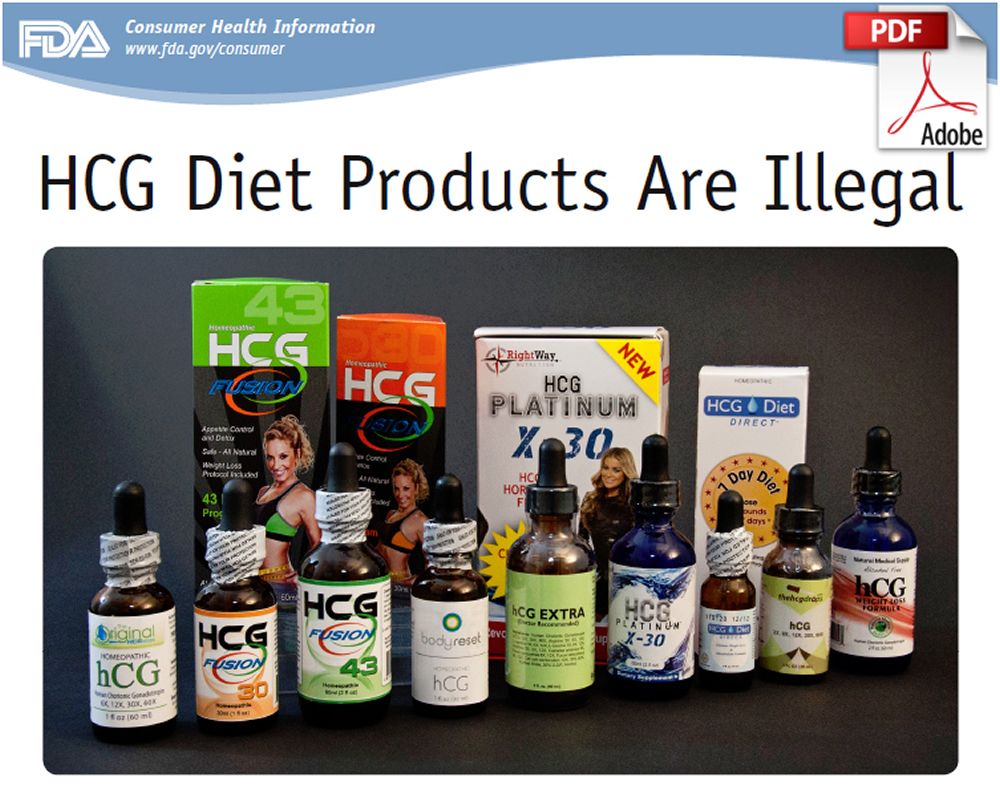
The Food and Drug Administration (FDA) is advising consumers to steer clear of these “homeopathic” human chorionic gonadotropin (HCG) weight-loss products. They are sold in the form of oral drops, pellets and sprays and can be found online and in some retail stores.
FDA and the Federal Trade Commission have issued seven letters to companies warning them that they are selling illegal homeopathic HCG weight-loss drugs that have not been approved by FDA, and that make unsupported claims.
A hCG Diet is a Potentially Dangerous Diet
Living on 500 calories a day is not only unhealthy—it’s hazardous, according to FDA experts. Consumers on such restrictive diets are at increased risk for side effects that include gallstone formation, an imbalance of the electrolytes that keep the body’s muscles and nerves functioning properly, and an irregular heartbeat 1.
A nutritionist at FDA’s Center for Food Safety and Applied Nutrition, echoes concerns about such restrictive diets. They can be dangerous, she says, and potentially fatal.
Very low calorie diets are sometimes prescribed by health care professionals for people who are moderately to extremely obese as part of medical treatment to lessen health conditions caused by obesity, like high blood pressure. But even then, strict—and constant—medical supervision is needed to ensure that side effects are not life threatening.
Without medical oversight, consumers on very low calorie diets may not be getting enough vitamins, minerals and most critically protein.
- FDA advises consumers who have purchased homeopathic HCG for weight loss to stop using it, throw it out, and stop following the dieting instructions. Harmful effects should be reported online to FDA’s MedWatch program 2 or by phone at 800-FDA-1088 (800-332-1088) and to the consumer’s health care professional.
Risks of Injected hCG 1
Women
- irregular periods and
- vaginal bleeding
- ovarian cysts
- blood clots
- breast tenderness
- headaches
- possible increased long-term risk of breast cancer for pre-menopausal women
Men
- breast enlargement
- breast tenderness
- blood clots
- decreased sperm production and infertility
Doctors worry that injectable hCG—which can affect sex hormones in both men and women—can cause harmful or unexpected effects.
Doctors also worry that hCG might not be safe in those with liver, kidney, or heart disease.
hCG Dietary Supplements 1
hCG is a protein, so it is broken down as food when taken by mouth. This process makes it inactive, meaning the hCG contained in drops and pills will have no effect on the body.
A homeopathic form of hCG is sold widely as an over-the-counter supplement. Homeopathy seeks to trigger the body to heal itself by giving very small doses of highly diluted substances. Most homeopathic products are so diluted that none of the healing substance—in this case, no hCG remains.
Whether or not an over-the-counter product actually contains hCG, doctors have concerns about the safety of dietary supplements. The FDA does not regulate food supplements the way it regulates prescription drugs. So trying to figure out if a particular product is safe can be confusing.
Internet sites selling hCG products online, for example, often do not list the ingredients in their product. Even when ingredients are clearly listed on the package, there is no guarantee that the contents are exactly what the package says. Supplements can contain too much or too little of the ingredient you want—or none at all. They can contain potentially harmful substances that aren’t listed on the label. Even a product labeled “natural” is not necessarily safe.
The FDA 4 and the Federal Trade Commission 5 recently warned companies that sell homeopathic hCG products that they are breaking the law by selling drugs that have not been approved, and by making unproven claims about their effects. The FDA and FTC also caution that these products may be unsafe.
What about the 500-calorie diet ?
A 500-calorie diet makes it hard to meet your nutritional needs. You need more than 40 different nutrients for good health and should be eating 5 to 9 servings of fruits and vegetables a day. Multivitamins are not a solution to eating a poor diet. A very low-calorie diet can also cause gallstones, an irregular heartbeat, and other health problems.
Some people with health problems related to their weight might be candidates for a very low-calorie diet, but they must be carefully supervised by a health professional.
What You Can Eat and What You Can’t
You won’t be eating much. The diet lets you have two meals a day, lunch and dinner. Each meal has to include one protein, one vegetable, one bread, and one fruit.
You can broil or grill veal, beef, chicken breast, fresh white fish, lobster, crab, or shrimp as long you don’t eat any visible fat. No salmon, eel, tuna, herring, or dried or pickled fish are allowed.
Vegetable choices include spinach, chard, chicory, beet greens, green salad, tomatoes, celery, fennel, onions, red radishes, cucumbers, asparagus, and cabbage.
Bread can be one bread stick or one piece of melba toast.
For fruit, you can choose an orange, an apple, a handful of strawberries, or half a grapefruit. The diet allows as much water, coffee, and tea as you want. You can also have up to 1 tablespoon of milk per day.
You can use sugar substitutes but not sugar to sweeten drinks. Butter and oils aren’t allowed.
Losing Weight Safely
Doctors agree that the best way to lose extra pounds and keep them off is to eat a healthy diet with plenty of whole grains, vegetables—including legumes like peas and beans and fresh fruits, and to limit fried foods or fatty meat products. Drinking water instead of sugary sodas and being sure to exercise for 30 minutes a day, most days of the week, are also key.
References- The Hormone Health Network. hCG Diet. http://www.hormone.org/hormones-and-health/myth-vs-fact/hcg-diet
- US Food and Drug Administration. MedWatch: The FDA Safety Information and Adverse Event Reporting Program. https://www.fda.gov/Safety/MedWatch/default.htm
- US Food and Drug Administration Warning: https://www.fda.gov/forconsumers/consumerupdates/ucm281333.htm
- US Food and Drug Administration. HCG Diet Products Are Illegal. https://www.fda.gov/forconsumers/consumerupdates/ucm281333.htm
- Federal Trade Commission. Joint FDA/FTC Warning Letter Concerning Product Labeling of Human Chrorionic Gonadotropin (HCG) Drugs. https://www.ftc.gov/public-statements/2011/11/joint-fdaftc-warning-letter-concerning-product-labeling-human-chrorionic


